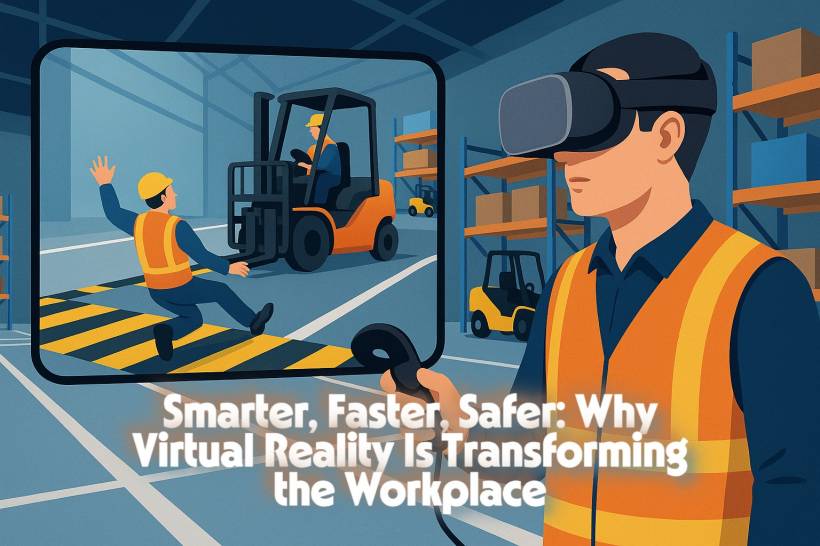A Forklift, a Shortcut, and a Wake-Up Call - Imagine you're working in a busy warehouse. The pedestrian walkways are clearly marked for safety, but you spot a shortcut and take it—without checking for oncoming traffic. Suddenly, through a VR headset, you see your virtual self get hit by a forklift.
Luckily, this isn't reality—it's a virtual reality simulation designed to teach warehouse pedestrian safety. And that "close call" is exactly the kind of impactful moment that can stick in an employee's mind far longer than a safety manual ever could.
"Having that immediate visual representation of what could go wrong if you don't follow the rules really makes an impact," says Annie Eaton, CEO of Futurus, the Atlanta-based VR production company behind the simulation.
VR in the Workplace: More Than Just a Gimmick
Virtual reality isn't just for gamers or tech enthusiasts anymore. Across industries, companies are harnessing VR to:
Adam Kornuth, Atlanta chapter president for the Virtual Reality Augmented Reality Association, sums it up simply: "Immersive tech is helping companies work smarter, faster, and safer."
From Recycling Labs to Airline Runways
At the University of Georgia, researchers developed VR Co-Lab to train recycling workers to collaborate with robots while dismantling electronics. The system monitors task times, tracks mistakes, and provides instant feedback—helping employees adapt to robotic movements without risking injury.
"Humans can't get hurt in a virtual environment," explains associate professor Beiwen Li. "And it's usually far more effective than just reading a manual."
Meanwhile, Futurus has been busy creating industry-specific VR training experiences, including:
The results? Higher retention rates, faster training, and safer workplaces—all without the risks or costs of real-life trial and error.
Why VR Is a Perfect Fit for Industry
Manufacturing and industrial sectors were among the earliest adopters of VR, and they're still leading the way today. Eaton points out that the return on investment is often clear in these environments, whether for:
But VR's benefits go beyond just safety. Companies are also seeing:
The Secret to Effective VR Training
As exciting as VR is, experts warn that it's not just about creating a "cool-looking" simulation.
"You have to start with the learning goals," says Maribeth Gandy Coleman of Georgia Tech's Institute for People and Technology. "What skills does the person actually need to develop? Floating around a virtual space without purpose won't teach you anything."
This is why companies like Futurus work closely with subject matter experts to ensure their simulations mirror real-world conditions. Accuracy isn't just a bonus—it's essential for the training to be effective.
The Future Is Immersive
With over 60,000 members across 50 chapters, the Virtual Reality Augmented Reality Association is proof that this technology is no longer a niche tool—it's becoming a workplace standard.
And as VR continues to evolve, its role in training, safety, and operational efficiency will only grow. Whether it's helping a new hire learn machinery without risk, or giving a veteran worker a refresher on safety protocols, VR is proving to be one of the most powerful tools in modern workplace training.
In short, smarter, faster, and safer isn't just a tagline—it's the reality that VR is making possible.
